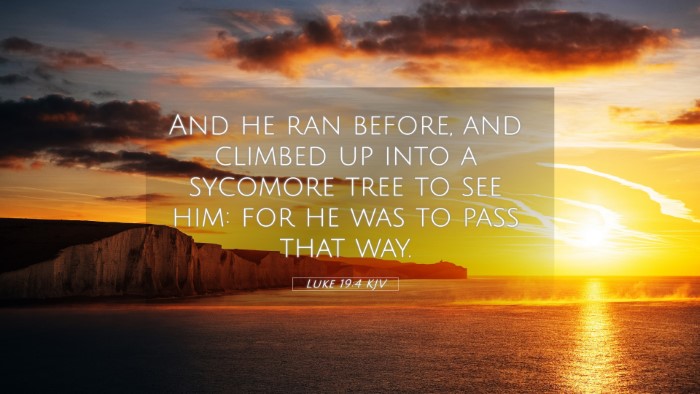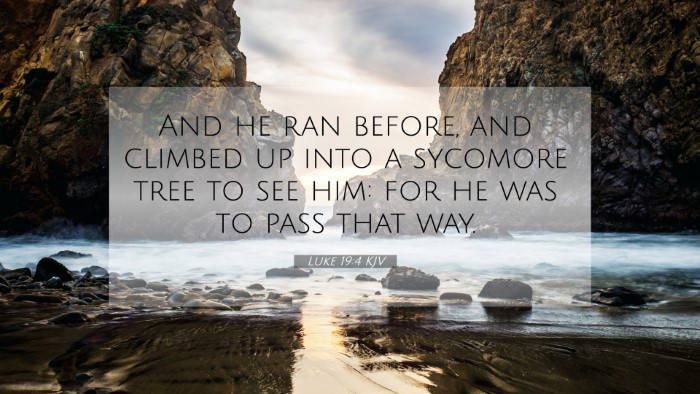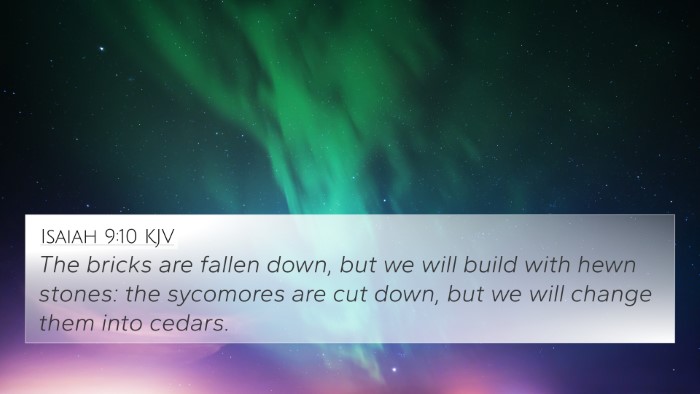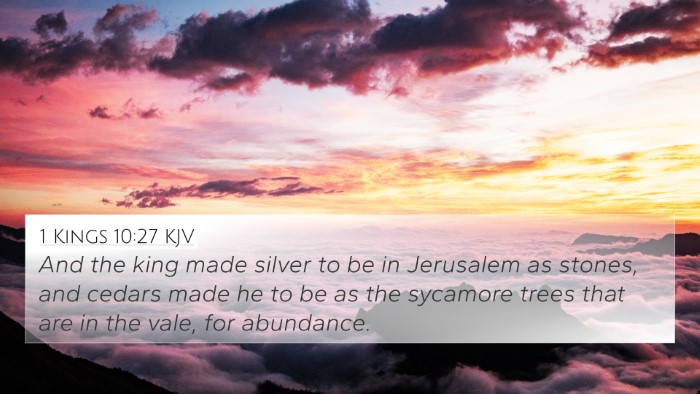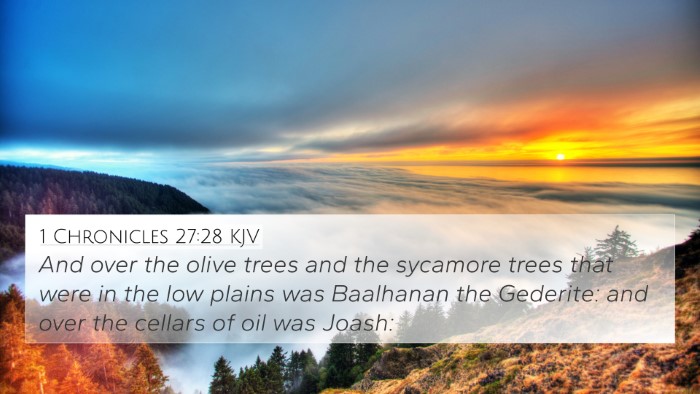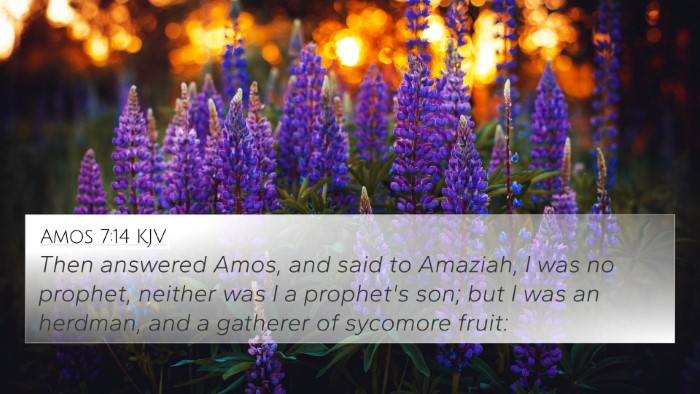Understanding Luke 19:4
In Luke 19:4, we read: “And he ran before, and climbed up into a sycamore tree to see him: for he was to pass that way.” This verse is significant within the broader narrative of Zacchaeus, the tax collector, who sought to have an encounter with Jesus. Below is a summary of insights from prominent public domain commentaries including Matthew Henry, Albert Barnes, and Adam Clarke, providing a comprehensive understanding of this verse.
Summary of Insights
The verse captures Zacchaeus's determination and eagerness to see Jesus. Here are some key points derived from various commentaries:
-
Matthew Henry:
Henry emphasizes Zacchaeus's proactive steps to overcome physical and social barriers to see Jesus. His act of climbing a sycamore tree symbolizes humility and a deep desire for spiritual enlightenment.
-
Albert Barnes:
Barnes connects this scene to the broader theme of salvation reaching the outcasts. The sycamore tree is noted for its sturdy branches, which allowed Zacchaeus to rise above the crowd, illustrating the lengths one might go to encounter divine grace.
-
Adam Clarke:
Clarke discusses the significance of Zacchaeus being a tax collector, considered a sinner by many. His actions reflect a strong faith and an acknowledgment of his need for redemption.
Thematic Connections and Cross-References
This verse connects with several other Bible verses that echo similar themes of seeking Jesus and the joy of salvation. The following verses provide a cross-reference outline:
- Luke 18:16-17: Jesus welcomes little children, emphasizing the importance of coming to Him with a childlike faith.
- Luke 19:10: “For the Son of man is come to seek and to save that which was lost,” reinforcing the purpose of Christ’s ministry.
- Matthew 5:14: “Ye are the light of the world,” suggesting that reaching out to others should be a natural response to experiencing Christ’s light.
- John 3:16: Describes God’s love for the world and the offering of salvation through faith, linking back to the purpose of Zacchaeus’s actions.
- Hebrews 11:6: Illustrates that God rewards those who earnestly seek Him, mirroring Zacchaeus's quest.
- James 4:10: Encourages believers to humble themselves before the Lord, akin to Zacchaeus climbing the tree.
- Acts 10:34-35: Speaks to God’s impartiality and willingness to accept anyone from any nation who fears Him, reflecting the inclusive nature of Zacchaeus's experience.
Understanding the Social Context
The social dynamics of the time are vital to understanding Zacchaeus's actions. As a chief tax collector, he was likely despised by the Jewish community. This context underscores the miracle of grace—Zacchaeus, despite societal rejection, sought to elevate himself literally and metaphorically to see Jesus.
Conclusion
In conclusion, Luke 19:4 highlights themes of determination, humility, and the transformative power of seeking Jesus. The insights of Matthew Henry, Albert Barnes, and Adam Clarke illuminate the depth of Zacchaeus's character and the overarching message of salvation. By engaging with various related verses, one can see the interconnectedness of biblical themes and the invitation God extends to everyone, regardless of their past. This verse exemplifies the gracious heart of Jesus and invites all believers to seek Him earnestly.
Related Scripture Cross-References
Engaging with the following verses may deepen your understanding of Zacchaeus's story:
- Luke 5:30-32
- Luke 7:34
- Luke 15:1-2
- Matthew 9:10-13
- Mark 2:15-17
- John 8:11
These verses not only connect to the narrative of Zacchaeus but also serve as powerful reminders of the broader narrative of redemption throughout Scripture. Utilizing tools like a Bible concordance or a Bible cross-reference guide can facilitate deeper study and understanding of these connections.

